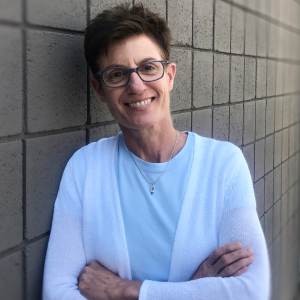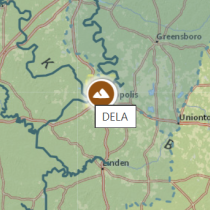The Next Steps for the NEON Project: Educate, Facilitate and Inspire
August 20, 2018
By Sharon Collinge, Past Observatory Directory and Chief Scientist
2018 is an exciting year for the NEON project. The construction of the observatory is nearing completion, with almost all field sites transitioned into operations. The NEON Data Portal now houses a growing collection of data products from our aquatic and terrestrial field sites.
This is a moment that has been a long time coming. When I first became involved in the planning and design for the NEON project, way back in 2004, we were just starting to think about what the observatory could be and what it could accomplish. Since returning in my new role as Observatory Director and Chief Scientist this year, it has been inspiring and gratifying to see how those initial plans and ideas have been developed and actualized.
The biggest question on my mind since starting my fulltime duties in June is: what's next? Now that we are finally pushing full steam ahead with data collection, how do we ensure that we fulfill the mission set forth by the National Science Foundation and maximize the impact of the NEON project?
In my mind, our biggest priority over the next year will be making sure that the data that we have are accessible, usable and useful for the scientific community. All of the infrastructure is in place for data collection, quality assurance, storage and dissemination. But the project will only be a success if the data are actually accessed and used by researchers, educators, students and the public.
NEON is a continental-scale observation facility designed to collect and provide data to a wide variety of users. Our job is to enable and support the research and education communities so they can put our data to work.
How do we do that? I see our responsibility as threefold:
- Educate researchers, educators and students about the kinds of data available to them and the ways they can use our data products for their own original research.
- Facilitate access to the data through software tools, educational materials and other resources that make the data easier to download, analyze and understand.
- Inspire more people to use the data in different ways through stories, examples and the development of a shared community of users.
Many of these activities are already underway. We are educating users and the public through our YouTube channel, workshops and data institutes, and online learning modules. Our data science team is facilitating access to and use of the data with open-source software packages and utilities. And we are inspiring the next generation of ecologists through programs for early career scientists.
There is a lot more work to be done over the next year to get the word out and support our early users. This is a critical time for the NEON project. We are collecting data on spatial and temporal scales that are completely unprecedented, bringing ecology into the era of "big data." In many ways, this will fundamentally change the way ecology is done and the kinds of questions the research community can explore.
Right now, we are just beginning to imagine the ways in which our users will put all these data to work. Our outreach efforts, software tools and educational resources will have to evolve along with our user community as their needs change. That may mean collecting new kinds of data products, adding more tools to help people access and visualize the data, and developing more opportunities to bring people together to talk about their research.
I am excited to see all of the ways that users are putting the NEON data to work already, from monitoring the health of forests to building new models for near-term ecological forecasting. Over the next year, I will be working with the NEON team and our user community to make the data more accessible and usable and bring our resources to a broader group of people, including teachers and students in undergraduate and K-12 classrooms. These young and aspiring scientists will be the ones to put NEON data to use over the next three decades.
We have a lot to share with our community of users—and a lot to learn from them. I look forward to continuing the conversation.
Do you have an idea you'd like to share? I'd love to hear your thoughts.

